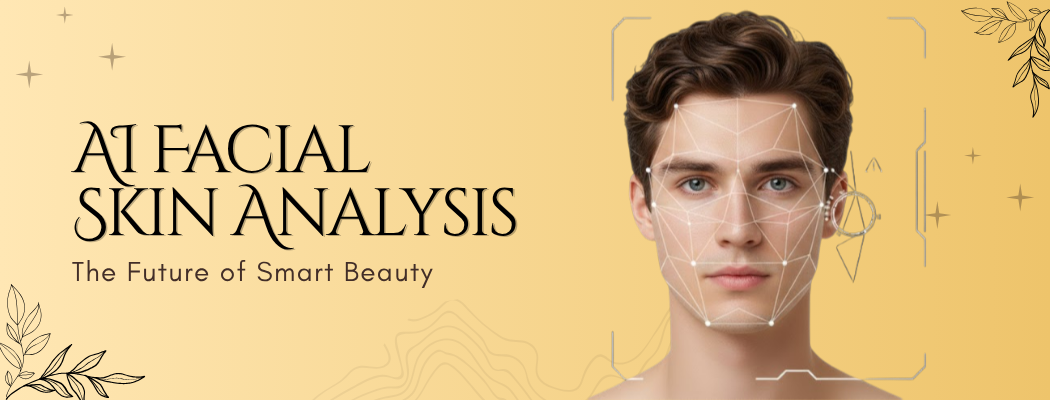
Artificial intelligence is fundamentally changing the beauty landscape, introducing innovative ways to analyze, understand, and address our unique skincare needs. AI facial skin analysis technology has emerged as a game-changing innovation, offering personalized insights that were once only available through expensive dermatologist consultations. This breakthrough is making the best skin care solution accessible to millions of people worldwide, democratizing beauty expertise through sophisticated algorithms and machine learning.
Understanding AI-Powered Skin Analysis
Skincare AI leverages advanced computer vision and deep learning algorithms to analyze facial images with remarkable precision. These systems can identify skin concerns, assess texture, detect fine lines, measure pore size, and evaluate pigmentation levels—all from a simple photograph taken with a smartphone camera.
The technology works by comparing your skin against vast databases containing millions of skin images. Machine learning models trained on dermatological expertise can recognize patterns invisible to the human eye, identifying early signs of aging, sun damage, dehydration, and other skin conditions. This level of analysis provides the foundation for truly personalized skincare recommendations.
Unlike traditional approaches that rely on generalized advice, skin analysis online powered by AI delivers customized insights based on your unique skin profile. The system considers multiple factors simultaneously—skin type, age, environmental conditions, and specific concerns—to provide comprehensive assessments that evolve as your skin changes over time.
The Science Behind Skincare AI Technology
Modern skincare AI platforms utilize convolutional neural networks (CNNs), the same technology powering facial recognition systems and medical imaging diagnostics. These neural networks process facial images through multiple layers, each detecting different features from basic edges and textures to complex patterns associated with specific skin conditions.
The analysis typically evaluates several key parameters. Wrinkle detection algorithms measure the depth, length, and distribution of fine lines and deeper wrinkles. Pigmentation analysis identifies dark spots, sun damage, and uneven skin tone. Texture assessment evaluates smoothness, roughness, and pore visibility. Hydration sensors detect moisture levels and potential dehydration issues.
What makes this technology particularly powerful is its ability to learn continuously. As more users upload images and provide feedback on recommended treatments, the AI models become increasingly accurate. This collective intelligence approach means that skin analysis online platforms grow more sophisticated over time, refining their ability to deliver the best skin care solution for diverse skin types and concerns.
Benefits of AI Facial Skin Analysis
The advantages of skincare AI extend far beyond convenience. Accessibility stands as perhaps the most significant benefit—anyone with a smartphone can access professional-grade skin analysis without scheduling appointments or traveling to clinics. This democratization of skincare expertise is particularly valuable for people in underserved areas with limited access to dermatologists.
Consistency represents another crucial advantage. Human assessments can vary based on lighting conditions, fatigue, or subjective interpretation. AI systems analyze skin using standardized criteria every time, ensuring reliable, reproducible results. This consistency enables accurate tracking of skin changes over weeks and months, helping you understand whether your current routine delivers results.
The speed of analysis is transformative. What might require a lengthy consultation and multiple follow-up visits can now happen in seconds. You receive immediate feedback on your skin condition along with personalized recommendations for the best skin care solution tailored to your specific needs.
Cost-effectiveness makes professional-quality skin analysis accessible to broader audiences. While in-person dermatological consultations can be expensive and may not be covered by insurance for cosmetic concerns, skin analysis online platforms often provide comprehensive assessments at a fraction of the cost or even free.
How to Use AI Skin Analysis Tools Effectively
Getting the most from skincare AI requires following best practices for image capture and analysis. Lighting plays a critical role—natural, diffused light works best. Avoid harsh overhead lighting or strong shadows that can distort the analysis. Take photos from multiple angles: front-facing, left profile, and right profile to ensure comprehensive coverage.
Consistency in your photography routine enhances tracking accuracy. Take images at the same time of day, preferably in the morning before applying any products. This standardization allows the AI to accurately measure changes over time rather than variations caused by different lighting or makeup.
Remove all makeup and thoroughly cleanse your face before capturing images. Skincare AI needs to analyze your bare skin to provide accurate assessments. Hair should be pulled back to ensure your entire face is visible, particularly the hairline and temples where aging signs often appear first.
When using skin analysis online platforms, be honest in the questionnaire sections. Information about your age, lifestyle habits, sun exposure, and current skincare routine helps the AI contextualize its visual analysis and recommend the best skin care solution for your circumstances.
Personalized Skincare Recommendations
The ultimate value of skincare AI lies in its ability to translate analysis into actionable recommendations. Based on identified concerns, these systems suggest specific ingredients, product types, and routines tailored to your needs. Someone with dry, sensitive skin receives vastly different recommendations than someone dealing with oily, acne-prone skin.
Advanced platforms go beyond basic product categories to recommend specific active ingredients at appropriate concentrations. For hyperpigmentation, the system might suggest vitamin C, niacinamide, or alpha arbutin. For anti-aging concerns, retinoids, peptides, or growth factors might be recommended. This precision helps you make informed purchasing decisions rather than guessing which products might work.
Many skin analysis online services now integrate with e-commerce platforms, allowing you to purchase recommended products directly. Some even partner with dermatologists who can review AI-generated reports and prescribe treatments when necessary, creating a seamless bridge between technology and professional medical care.
Tracking Progress and Adjusting Your Routine
One of the most powerful features of skincare AI is progress tracking. By analyzing your skin at regular intervals—typically every two to four weeks—the system documents improvements or identifies concerns that aren't responding to treatment. Visual comparisons showing before-and-after images provide tangible evidence of your skincare journey.
This objective feedback loop helps you understand what works and what doesn't. If your current routine isn't delivering results after a reasonable trial period, the AI can suggest adjustments. Perhaps you need a higher concentration of an active ingredient, or maybe a different approach altogether would deliver the best skin care solution for your evolving needs.
The technology also helps prevent over-treatment, a common problem when people become impatient with skincare results. By showing gradual improvements that might not be obvious in the mirror, skincare AI encourages consistency and prevents unnecessary product switching that can irritate skin or waste money.
Privacy and Data Security Considerations
When using skin analysis online platforms, understanding data privacy is essential. Reputable services encrypt facial images and store them securely, often allowing you to delete your data at any time. Read privacy policies carefully to understand how your images and personal information will be used.
Many platforms anonymize data for research and algorithm improvement purposes. While this collective approach enhances the technology for everyone, ensure you're comfortable with how your information is handled. Look for services compliant with data protection regulations and transparent about their practices.
The Future of Smart Beauty
As skincare AI continues evolving, we can expect even more sophisticated capabilities. Future systems may integrate environmental data, analyzing how pollution, humidity, and UV exposure in your location affect your skin. Wearable sensors could provide real-time hydration and pH measurements, feeding additional data into AI models.
Integration with smart mirrors and augmented reality will make skin analysis more immersive and interactive. Imagine virtually trying different treatments and seeing predicted results before committing to a new routine. These innovations will make finding the best skin care solution even more precise and personalized.
Conclusion
AI facial skin analysis represents a fundamental shift in how we approach skincare—from generalized advice to truly personalized treatment plans based on scientific analysis. Skincare AI platforms deliver professional-grade insights through accessible skin analysis online tools, empowering individuals to make informed decisions about their beauty routines.
While technology cannot replace dermatologists for medical conditions, it bridges the gap between expensive consultations and generic over-the-counter advice. As these systems continue improving, they'll become increasingly central to how we maintain healthy, radiant skin. The future of beauty is intelligent, personalized, and remarkably accessible.
